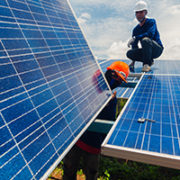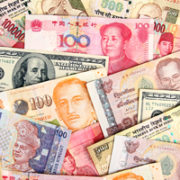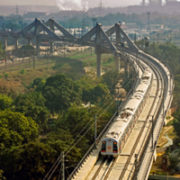Archive | 2019
Finance sector development, Information and Communications Technology
 Education, Information and Communications Technology
Education, Information and Communications Technology
 Economics, Energy
Economics, Energy
 Economics, Governance and public sector management, Industry and trade
Economics, Governance and public sector management, Industry and trade
 Economics, Energy
Economics, Energy
 Economics, Finance sector development
Economics, Finance sector development
 Governance and public sector management, Transport
Governance and public sector management, Transport
 Industry and trade, Information and Communications Technology, Private sector development
Industry and trade, Information and Communications Technology, Private sector development
 Governance and public sector management, Transport, Urban development
Governance and public sector management, Transport, Urban development
 Economics, Governance and public sector management
Economics, Governance and public sector management

Closing the gender gap in peer-to-peer lending

Financial inclusion for women has been embraced by policy makers as an important development priority. However, despite women having lower risk preferences and higher creditworthiness, the gender gap in access to finance is still prevalent in the traditional credit market. This is due to various factors, such as differences in employment opportunities, legal obstacles, cultural norms, and limited access to the guarantee mechanism, among others.
E-learning to enhance capacities in Asia and the Pacific

The digital age poses both challenges and opportunities for many developing countries in Asia and the Pacific. In recent years, we have seen jobs in various sectors become obsolete. At the same time, we see new economic spaces being created demanding new skills and competencies. This also necessitates finding innovative ways to facilitate learning and to promote knowledge sharing, especially in the context of economic development.
Political risks in energy-transporting countries and energy security in the Caspian Basin

Energy security is a crucial issue in contemporary international relations but not a new one. It is usually defined as the reliable and sufficient supply or demand of energy at acceptable prices and is at the top of the agenda for both energy-importing and energy-exporting countries.
Land readjustment in Japan: Beyond the myth of Japanese consensus and harmony

The landscape of Misato City in Japan has changed drastically in the last 35 years. In the 1980s, Shin-Misato Station was the Mushashino marshalling yard for freight services. Most of the land near the station was used for agriculture, but once residential houses increased and more people came to settle in the area the government built a passenger train station.
Feed-in tariffs and loans for boosting private investment in renewable energy

Investment in renewable energy of $9 trillion is required to meet global energy supply needs by 2040 (International Energy Agency 2016), but investments in fossil fuels still dominate those in renewable energy. Many countries are implementing national energy policies, including fiscal, financial, information and education, institutional support, strategic planning, regulatory, and voluntary measures, to promote greater private investment in renewable energy.
What explains the growing global demand for cash?

In recent years, cashless payment methods have become increasingly prevalent around the world due to the use of various innovative tools and convenient financial services through mobile phones. This trend is contributing to greater efficiency in our economies and financial systems. Nevertheless, a puzzling phenomenon is that the demand for cash has been rising in many countries. This means that growth in the demand for cash reflects factors other than the transaction motive used for payment. These factors might include opportunity cost, precautionary motives, and other motives such as aging and demand from abroad.
Thinking beyond the suitability of high-speed railway in India

In India, the project to build the country’s first 500-kilometer high-speed railway (HSR) from Mumbai to Ahmedabad is underway. For comparison, all top 10 economies in the world except the United States have constructed several HSR lines in the past 30 years. The People’s Republic of China (PRC) alone has built nearly 28,000 kilometers of HSR in the past 20 years. Nevertheless, opinion makers in India are expressing contradicting views, questioning whether it is suitable for the country to develop expensive infrastructure such as HSR.
Expanding trade opportunities for SMEs in Asia and the Pacific

Small and medium-sized enterprises (SMEs) are the backbone of the Asian economy. They already account for over 95% of all businesses in Asia and employ an estimated 60% of the region’s workforce (Mastercard and the Economist Intelligence Unit 2019). Hence, helping SMEs grow can translate directly into economic and workforce expansion.
Don’t be derailed by rights-of-way

The disappointing scale-back of California’s showcase high-speed rail system between San Francisco and Anaheim has many experts asking what lessons can be learned. Similar pushbacks have occurred on other continents: witness the popular resistance to construction of a new superstation as part of Stuttgart’s urban renewal, which escalated into violent demonstrations, delays, and stalemates.
Bridging the digital tax divide in Asia

Digitalization has transformed the global economy and had significant impacts on Asia and the Pacific, home to some of the world’s biggest and most advanced e-commerce markets, such as the People’s Republic of China (PRC), Australia, Japan, New Zealand, Singapore, and the Republic of Korea (Asian Development Bank and United Nations ESCAP 2018).


Search
Subscribe / Connect to Asia Pathways
Subjects
- Agriculture and natural resources
- Blog
- Capacity development
- Climate change
- Economics
- Education
- Energy
- Environment
- Finance sector development
- Gender
- Governance and public sector management
- Health
- Industry and trade
- Information and Communications Technology
- Infrastructure
- Miscellaneous
- Population
- Poverty
- Private sector development
- Regional cooperation and integration
- Sanitation
- Social development and protection
- Transport
- Uncategorized
- Urban development
- Video Blog
- Water
Recent Posts
- Artificial intelligence: A new driver for inclusive growth and development?
- Increasing trust in cross-border e-commerce and artificial intelligence
- Enhancing access to maternal and newborn healthcare in developing Asia
- Can electric vehicles lead the way to a sustainable future?
- Mitigating climate-related sovereign risk to accelerate action on the climate emergency




Recent Comments